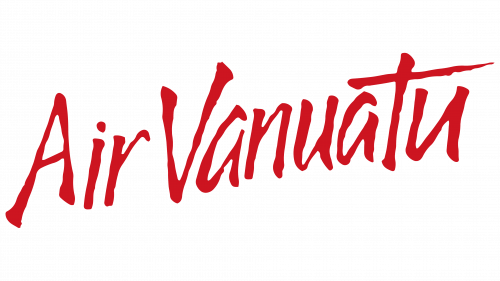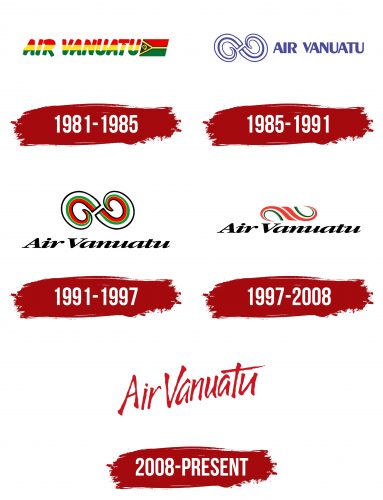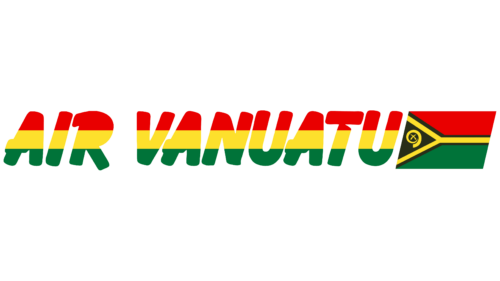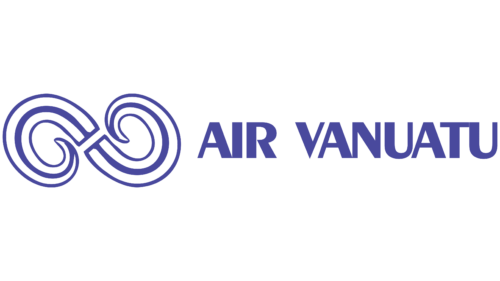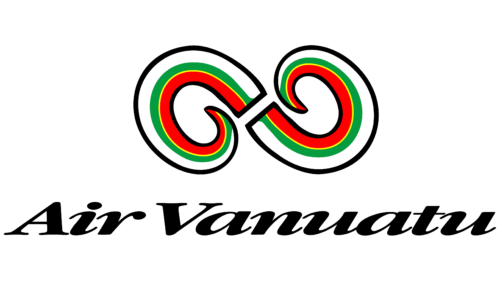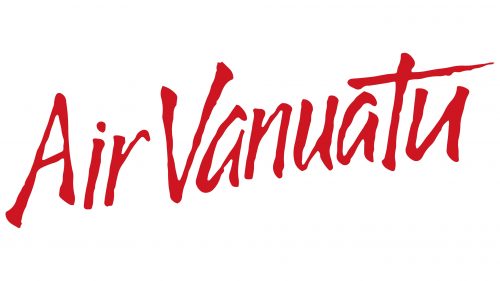Air Vanuatu’s logo reflects the company’s dual role as a modern service provider anchored in a rich cultural environment. This balance allows Air Vanuatu to be both an ambassador of Vanuatu’s heritage and a global travel organizer. The airline’s expertise and reliable service are a cultural bridge between Vanuatu and the world.
Air Vanuatu: Brand overview
Vanuatu became independent on July 30, 1980; soon after, the government formed its national airline. Air Vanuatu was established on February 19, 1981, with a capital of 3.5 million vatu, about $41,000. The airline started with two 19-seater De Havilland DHC-6 Twin Otters and flew first on April 29, 1981, from Port Vila to Espiritu Santo and Luganville.
During the 1980s, Air Vanuatu expanded its fleet to include four 37-seater DHC-8 Dash 8 aircraft and Boeing 737-200s. This enabled the airline to start international flights. The first international flight was to Brisbane, Australia, on July 5, 1987. Later, the airline added routes to New Zealand, Fiji, and New Caledonia.
The 1990s helped Air Vanuatu solidify its role as the national carrier. However, the airline faced financial challenges in the 2000s due to an outdated fleet. The most difficult period was between 2004 and 2005 when the airline had only one operational Boeing 737-300. With assistance from Air Fiji and the Vanuatu government, the airline recovered. Between 2010 and 2012, Air Vanuatu acquired two Airbus A220s and Boeing 737-800s to update its fleet.
In 2019, Air Vanuatu added a third A220, which allowed it to resume some routes to Australia and New Zealand. The airline operates three turboprop Harbin Y-12s for flights among Vanuatu’s islands.
As of 2023, Air Vanuatu operates around 140 weekly flights across 24 destinations, including key routes to Australia, New Zealand, New Caledonia, and Fiji. The airline has about 300 employees. Key leaders include Acting CEO Joseph Laloyer, Chief of Flight Operations Andrew Carey, and Training Manager Alexander Phillips.
Meaning and History
What is Air Vanuatu?
Air Vanuatu, based in Vanuatu’s capital, Port Vila, is an important airline in the Pacific aviation industry, providing a crucial link between the islands and the world.
Established in the early 1980s, the airline has always been committed to opening up Vanuatu to the rest of the world. It has grown steadily over the years, expanding its route network to include other Pacific Islands, Australia, New Zealand, and parts of Asia. Despite challenges such as geographic isolation and a limited local market, the airline has proven its resilience and adaptability, gaining credibility in the industry.
1981 – 1985
Air Vanuatu was established in 1981. By 1985, it had introduced its first logo, which reflected Vanuatu’s national identity and culture. The logo includes national colors and the image of the Vanuatu flag, which is designed to express pride in the country. The design communicates Vanuatu’s cultural and social values to the world.
Each color in the logo has a specific meaning that enhances the design’s visual appeal and significance. The red represents blood, life, and passion, showing Vanuatu’s people’s vital energy and deep emotional and spiritual connections to the land. Green represents the islands’ wealth, reflecting Vanuatu’s fertile lands and natural beauty. It reminds us of the lush tropical forests and vegetation, positioning the islands as a treasure in the Pacific Ocean. Yellow symbolizes the light of the Gospel, important as most of Vanuatu’s population are Christians. This color signifies hope, faith, and spiritual enlightenment, mirroring the nation’s strong faith and values.
Including national symbols and colors in the Air Vanuatu logo is strategic. It helps the airline introduce itself globally and promotes Vanuatu’s lesser-known culture, sharing its unique beauty with travelers worldwide. The logo connects the islands’ cultural heritage and the global aviation network, making every flight a cultural exchange.
1985 – 1991
In 1985, Air Vanuatu redesigned its logo to reflect themes of the sky and flight while still connecting to the country’s culture. The new design blends elements of modern aviation and Vanuatu’s unique heritage.
The logo features two blue and white swirls representing air currents, symbolizing airplanes soaring and returning to Earth. These swirls intertwine to form an infinity symbol, representing the airline’s hopes for long-term growth.
For locals, the swirls recall pig tusks, which are significant in Vanuatu culture as symbols of wealth, prosperity, and high social status. This respects and highlights the nation’s traditions and history.
The logo’s lines also suggest sand drawing, an ancient art form native to Vanuatu that is recognized as a UNESCO heritage. This inclusion emphasizes Vanuatu’s cultural richness and the airline’s role in promoting national heritage.
1991 – 1997
In 1991, Air Vanuatu updated its logo to strengthen its connection with the country’s cultural heritage and identity. This update involved integrating national colors and respecting the homeland’s traditions and values. Vanuatu is known for its vivid colors, which reflect the wealth and diversity of local nature and culture. In contrast, the company’s previous blue emblem appeared less expressive.
Adding national colors to the tusks aimed to better represent Vanuatu’s aesthetics and spirit, highlighting the region’s uniqueness and appeal to international visitors. This change enhanced the logo’s visual appeal and deepened its symbolic connection to the homeland, emphasizing the importance of national identity in the airline’s corporate culture.
The logo now includes:
- Black lettering.
- Referencing Vanuatu’s indigenous Melanesian population.
- Adding depth to the logo’s symbolism.
The continuous script font mimics the island tribes’ traditional continuous line drawings, which carry multiple meanings and stories, representing an important part of cultural heritage. This font choice underscores the airline’s commitment to preserving and respecting this artistic tradition, making it a key part of its brand.
1997 – 2008
The multicolored wavy stripes on Air Vanuatu’s logo are a tribute to the airline’s authenticity. They echo the national patterns and colors. The elements have the same shape but are mirror images of each other. The lines are smooth and rounded, reminiscent of the flow of airwaves. The swirls are emerald green, black, yellow, white, and red. The inner stripes are thin, and the outer stripes are wide, giving the illusion of volume. Below is the company name, written in a cursive script that mimics handwriting. The letters are lowercase, except for “A” and “V,” bold and black.
The mirroring of the wavy stripes gives the logo symmetry, creating a sense of balance and harmony. The use of national colors and patterns indicates Vanuatu’s cultural heritage. This thoughtful combination of elements conveys the airline’s identity and connection to its homeland. The italicized, handwritten style of the company name gives it a personality that contrasts well with the more formal, bold symbols.
2008 – today
Air Vanuatu radically transformed its logo during major updates, including new leadership and a refreshed fleet. This change highlighted the airline’s shift towards innovation and growth within the aviation industry.
The redesigned logo features a red, slightly uneven inscription with a bold slant, similar to urban street art. This design emphasizes dynamism and creativity, differentiating Air Vanuatu from more traditional airline brands. The red color, symbolizing heat, brightness, and wildness, reflects the energy, passion, and adventurous spirit of the Vanuatu people.
The new logo underscores the airline’s uniqueness and authenticity, celebrating its people’s free and strong spirit and cultural heritage. Air Vanuatu – promotes this island nation’s culture, traditions, and enduring spirit.
Font and Colors
The Air Vanuatu logo features a casual, carefree handwritten style that resembles calligraphy, giving the text a natural and unique look. The exact name of the font is hard to identify as it likely was custom-designed for the company.
The font style is italic but not bold, making it noticeable and dynamic. It is used in the logo to create a warm and welcoming atmosphere, highlighting the company’s personalized approach. Despite its artistic flair, the font remains clear and distinguishable. The entire inscription is angled from left to right, suggesting ascent.
The red logo evokes energy, passion, and warmth, reflecting the airline’s lively and positive vibe. The red makes the logo memorable and helps it stand out among other airlines.
FAQ
Who owns Air Vanuatu?
The government of Vanuatu owns Air Vanuatu. It is a state-owned enterprise, meaning the government manages its operations and finances. This type of ownership is typical for national airlines because it supports the country’s goals, such as boosting tourism and improving connections within Vanuatu and internationally.
The government oversees Air Vanuatu and provides financial support when needed, such as during crises or economic downturns in the industry. It plays a significant role in deciding the airline’s routes, partnerships, and growth plans. This involvement ensures that the airline helps support Vanuatu’s economic development and effectively connects the nation.
What airline is Vanuatu?
Air Vanuatu is Vanuatu’s national airline, with its headquarters in Port Vila. It serves as the country’s main airline, offering flights to major destinations like Australia, New Zealand, and New Caledonia, as well as other locations in the South Pacific. Since its establishment in 1980 after Vanuatu gained independence, Air Vanuatu has become a key player in promoting the nation’s tourism and business, contributing significantly to its economic growth. The airline has a diverse fleet that manages international travel and local flights within the island chain, effectively overcoming the area’s geographic challenges and ensuring vital links within Vanuatu and with the outside world.
What is the fleet of Vanuatu Airlines?
Air Vanuatu has a varied fleet designed for both international and domestic flights. It uses the Next Generation Boeing 737-800 on international routes to Australia and New Zealand, which is great for long flights because of its capacity and range. The airline uses a new ATR-72 for trips to New Caledonia, which works well for these shorter international flights.
For traveling within Vanuatu, Air Vanuatu’s fleet includes the ATR-72 for the bigger domestic routes. It has three new Y-12s for island hopping, perfect for the short runways on many islands. One Twin Otter and one Islander aircraft are in the fleet, both known for handling tough and remote airstrips. This range of aircraft allows Air Vanuatu to connect the many islands of Vanuatu effectively.
What is the IATA code for Vanuatu?
The IATA code for Vanuatu’s main airport, Bauerfield International Airport, is VLI. Located in Port Vila, the capital city, this airport is the main entry and exit point for travelers to and from Vanuatu. It manages international and domestic flights, linking Vanuatu with destinations throughout the Pacific. The airport can handle various aircraft types, which supports the services of Air Vanuatu and other international carriers. The IATA code VLI is crucial for identifying the airport in travel documents and simplifies booking and scheduling flights for passengers and cargo.
Does Qantas own Air Vanuatu?
Air Vanuatu is the national airline of Vanuatu and is owned by the government. The airline was set up again in 1987 when the government made a deal with Australian Airlines. This company is different from Qantas and helped Air Vanuatu by providing planes for lease and support for operations. They started flying weekly from Sydney to Port Vila on December 19, 1987, using a Boeing 727-200.
Even though Qantas bought Australian Airlines in 1992, it did not acquire Air Vanuatu. Instead, Qantas works with Air Vanuatu through partnership and codeshare agreements, which help airlines extend their services without owning each other.
